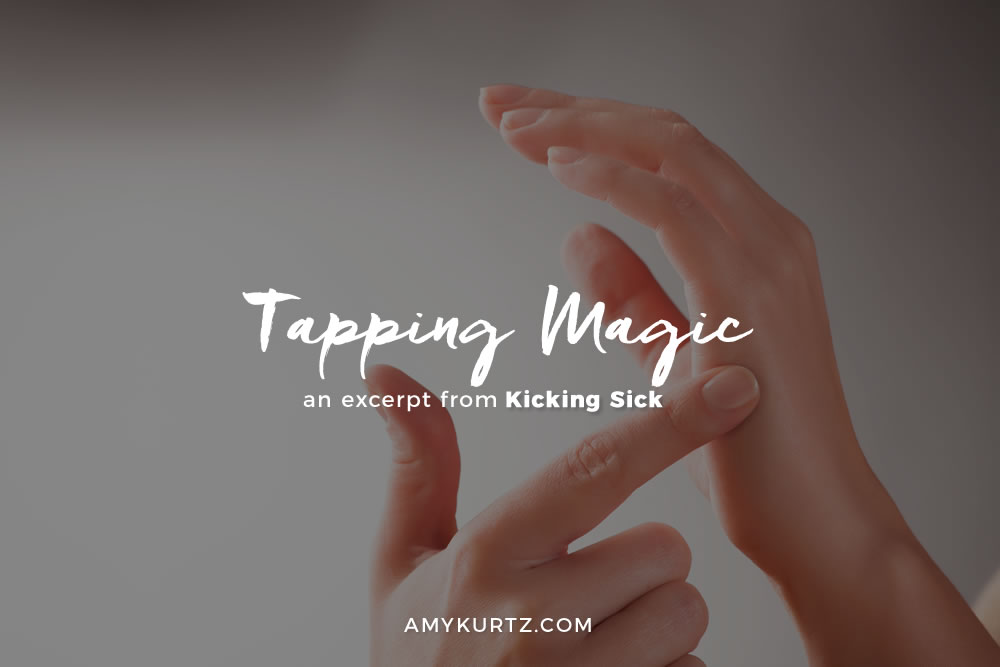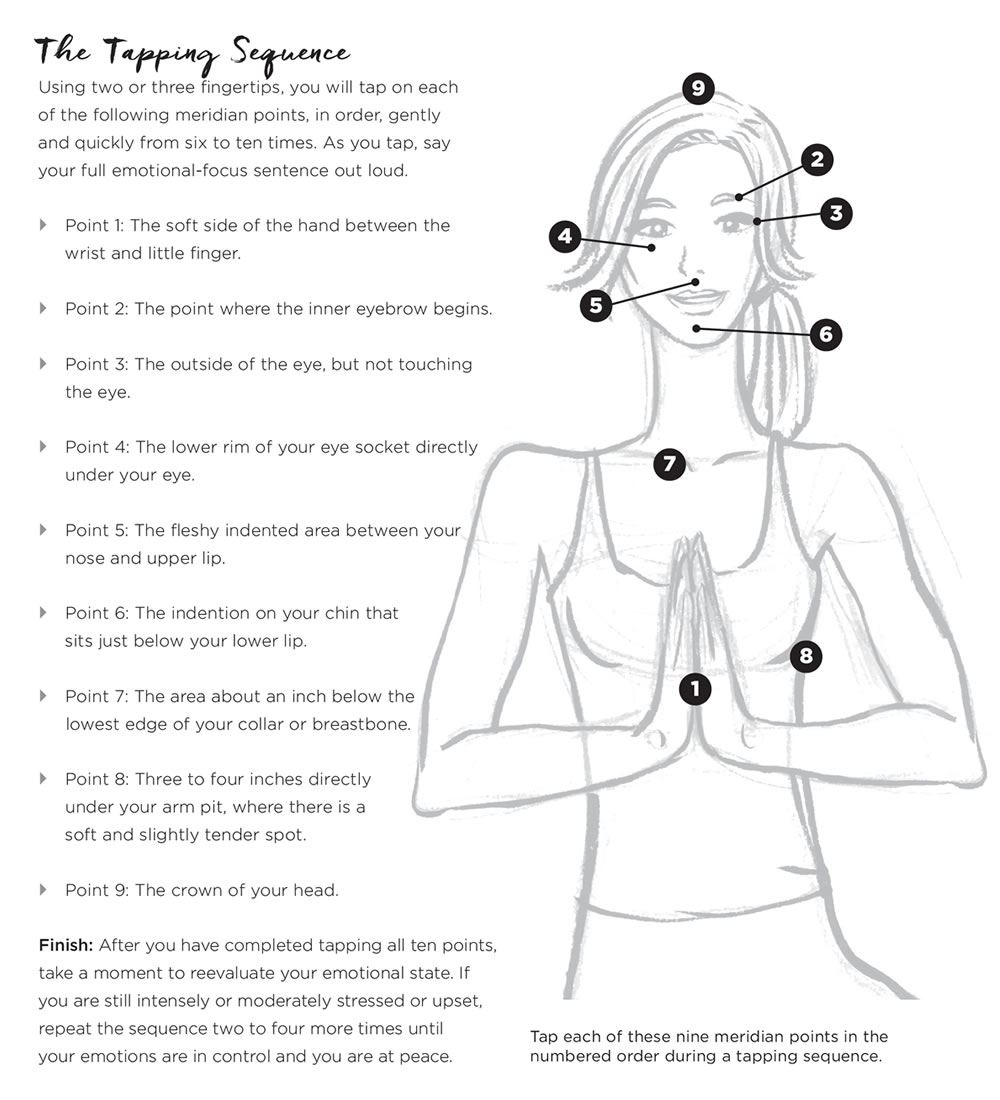No matter where you are in your healing journey, there is always something you can do that will help you to feel better. Emotional Freedom Technique, or EFT, otherwise known as tapping, is a very cool and effective technique to add to your self-care toolbox.Here is an excerpt on Tapping from my book, Kicking Sick:
Also known as meridian tapping, EFT involves tapping on specific meridian points on your upper body with your fingertips. Meridian points are part of traditional Chinese medicine. Our life energy, known as Qi (pronounced “chee”), flows through our meridians, energetic lines or pathways that run throughout our body. Tapping specific points along these meridians helps release the Qi and, in doing so, relieves stress and anxiety.
Tapping can be learned in a matter of minutes and requires no special equipment; just your fingers and a bit of private space is all you need. You can start using tapping immediately for instant relief from stress and challenges in your life. If you are nervous before a doctor’s appointment, tap. When you’re feeling less than optimal, tap. You can even tap at the beginning and end of each day to set yourself up for success. Many people I know report immediate relief when tapping during stressful times.
Tapping is a technique in which you use your fingers to tap on meridian points in order to relieve stress. We intuitively know, for example, that the key meridian points near the eyebrows, nose, temple, and chest can comfort us, which is why we often unconsciously touch these areas when we are under stress. Tapping lets us access these points in a conscious and deliberate way.
When we have chronic illness, there are many emotions involved: sadness, frustration over what you are missing out on in life, and so on. For people with physical challenges, the burden of emotions can be paralyzing. You want to get those negative feelings cleared. Tapping is a means of clearing those emotions away and stimulating specific acupressure points, and that in turn sends a calming signal to your brain, telling you that it is safe for you to relax. So you can think about whatever you need to think about with- out getting hijacked by emotions. Before you plant the seeds of growth, you have to pull the weeds, and tapping supports doing that.
First of all, you need to have clarity on what you want to work on. Maybe today what is bothering you is how you feel when people ask for things you don’t have the energy or emotional or physical ability to give. Or it could be that you are upset that you are not getting support you need.
Start where you are: “I am angry that my friend called and didn’t ask how I was doing.” “I feel like I have too much on my plate.” If your concern is generic, tapping won’t be as effective. Be specific. When it comes to pain, you can begin to tap on the symptom: “Even though my tummy hurts, I love and accept myself.” “Even though I have this pain in my lower back, I love and accept myself.” The important thing is to give the issue a voice, your voice. Measure on a scale from one to ten how much emotional pain you are in before you start tapping. See if you moved from a ten to a five on the pain meter after doing a tapping sequence. Once you go down to a two or three, you can incorporate other specific statements.
I think it’s a good idea to start out using a script. Write down your concern and give yourself five minutes to do one sequence. That’s really all it takes. If when you finish you feel you need to do another sequence, repeat it. Or do another one using a different line or script.
When you do it as a regular practice, the tap- ping sequence becomes second nature.
Before you begin: Choose a very specific emotional focus you would like to clear from your mind. Put that emotional focus into words—for example, “I am angry at myself” or “My diagnosis feels overwhelming.”
Now insert that emotional-focus phrase into the following sentence: “Even though I (insert your chosen phrase here), I love and accept myself.”
For instance:
- Even though I am angry that I feel so sick, I love and accept myself.
- Even though I’m nervous about seeing this new doctor, I love and accept myself.
- Even though I’m mad at myself for not being able to keep up with my friends, I love and accept myself.
- Even though my diagnosis feels overwhelming, I love and accept myself.
Here’s a diagram to help you get the hang of it:




Hi Amy,
Looking for permission to use your lovely tapping points photo for a free tapping guide I am creating. Of course I will include your website as the source.
Thanks!
Jennifer